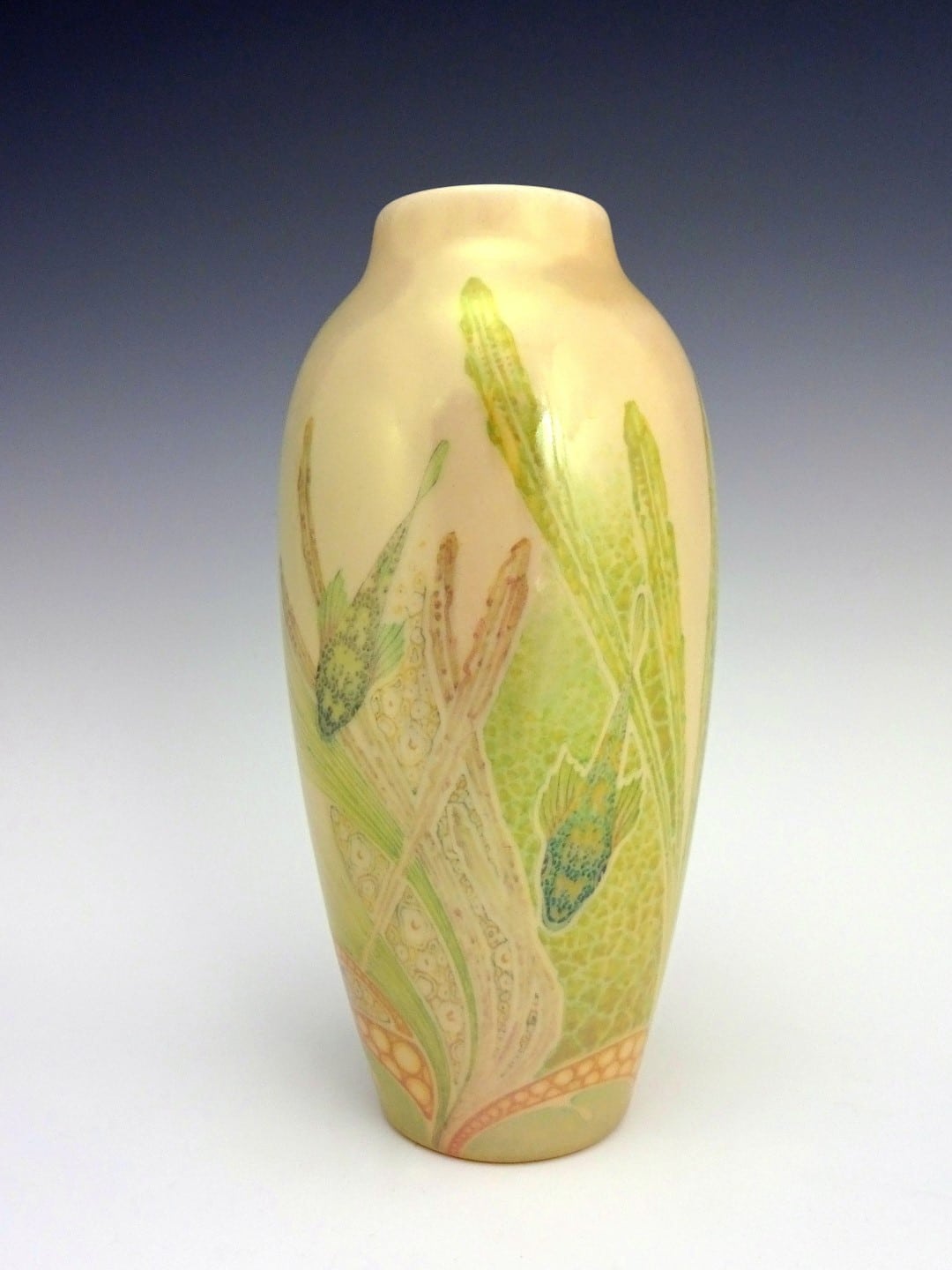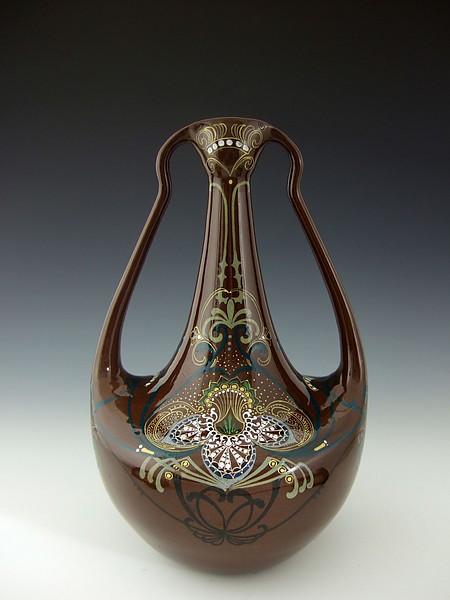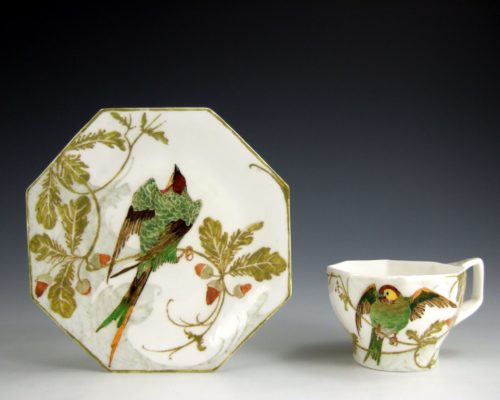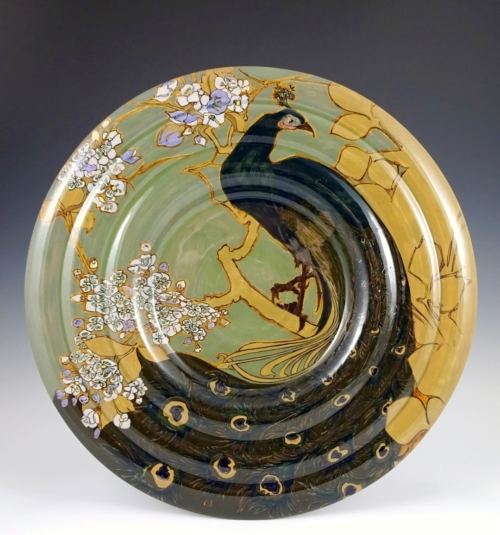Description
~Sold~
A St.Lukas Utrecht luster glaze vase, circa 1910 with decor R; ‘diving dolphins’ on a gold colored background. The vase is 16 cm (6.3″) high, model 19, marked with the St.Lukas Utrecht made in Holland factory mark, 19 and R
On loan to the Gemeentemuseum Den Haag for the exhibition ‘Art Nouveau in The Netherlands’, 21 April till 28 October 2018
St. Lukas Utrecht
St. Lukas Utrecht was founded in 1909 by G.J.D. Offermans and his brother-in-law A.S. Enthoven. In its heyday, the factory produced decorative earthenware of outstanding quality and was specialized in the use of (gold) luster glazes.
Offermans, who used to be employed at the Porceleyne Fles in Delft and Haga in Purmerend, had established a reputation for his perfectly executed earthenware with luster glaze. This costly glazing method, which added an iridescent layer on the product by adding gold or silver powder to the glazing mixture, was also used during his time at St. Lukas. The combination of the luster glazes with flora and fauna decorations resembles Japanese earthenware from the late 19th, early 20th century.
The consequence of the costly manufacturing was a small, but international clientbase and the factory’s dependence on capital injections by shareholders. Ceramic artist J.C. Heytze took over after the death of Offermans in 1914 and the factory started producing more modest earthenware, with sober decors. The factory closed in 1923 and went on as Firm Heytze and Seinstra. The production of luster earthenware was fully stopped when the factory was sold to shareholders and moved to Maarssen in 1927. It started manufacturing plain, inexpensive earthenware, which caused the market to shrink to regional proportions, eventually forcing the factory to shut down for good in 1933.




